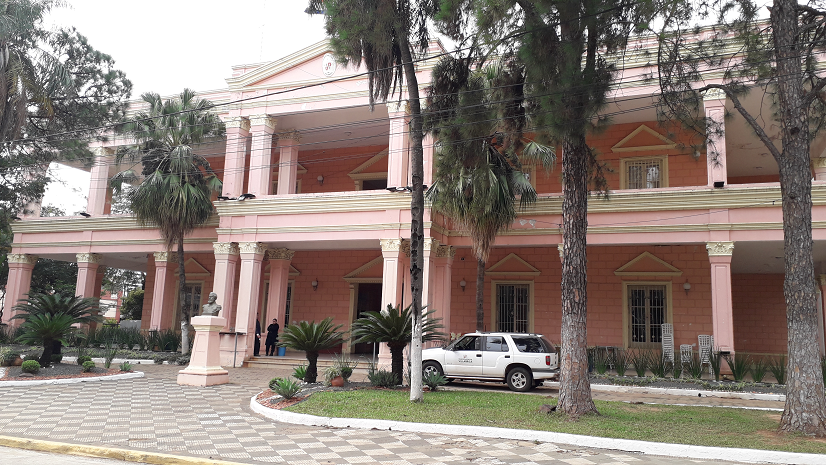Villarrica is a sizeable city located in central Paraguay. It is a compact city surrounded by countryside and lies approximately 150 km from Asuncion.
Although commonly known as Villarrica the full name of the city is Villarrica de Espirito Santo and it was originally founded in 1570.
For many years after that the city moved around the countryside as a more suitable location was sought. Those wanderings finally came to a halt in 1682 when it arrived at a location near to the Ybytyruzu Hills.
Unsurprisingly after all the previous relocations it was some while before the authorities back in Spain formally gave matters their approval with that not occurring until 1701.
Since that time however Villarrica has remained and thrived in it’s current location.
The city itself has a population of a little over 50,000 and contains all that would be expected in the way of services and infrastructure from a city. There are a wide range of retail options as well as all the necessary medical and legal services.
In addition to being the service hub for a large area of surrounding countryside Villarrica is also a place of education and culture.
For education there are a number of university campuses across the city and the many students that attend them help give Villarrica a lively, youthful air.
And in the form of culture it is considered after Asuncion to be the second most important cultural centre in Paraguay. A number of Paraguayan cultural artists have come from Villarrica and they have left their legacy upon the city.
It was somewhere that I did not have much personal experience of, so when the opportunity arose to spend a couple of days there I did not let the chance for a little exploring pass me by.
To visit Villarrica meant an early start for me. I knew it would be a two hour journey and did not want to waste time that could be spent learning about the town travelling.
Despite it’s length it was a good journey. First down to Paraguari and then picking up the modern highway that runs directly to Villarrica. That road was a joy to travel, modern and almost empty.
Once in town my first job was a find a hotel. With my aim being to explore the city I chose an old fashioned central hotel rather than one of the more upmarket ones on the outskirts.
There were several similar hotels available but in the end I chose the Hotel Ybytyruzu. Mainly because it had off road parking. A simple but clean and comfortable place and more than adequate for a night or two.
Heading out into the city from the hotel I discovered I was ideally located on the edge of the central commercial district.
Common sense made this the first place to investigate. Here I found several city blocks filled almost entirely with commercial premises.
This would ensure that anyone wishing to purchase items would be able to find everything they needed within walking distance. It also helps keep retail premises from spreading out to far into more residential districts.
The shops in Villarrica were a mixture of family and local businesses alongside the the national Paraguayan chains. A lack of Shopping Malls made the streets a colourful and vibrant place to explore.
Alongside the shops there were also all the bars, cafes, restaurants and ice cream parlours anyone could desire. I suspect their numbers were being driven by Villarrica being a university city.
All around the centre there were fine buildings to be seen. The council chambers had the appearance of a colonial mansion. The picture at the top of the article is of it. That faced a large, clean statue filled plaza full of pathways and benches.
Furthermore there are a number of fine old churches to be seen in and around the city centre. The grandest of these being the Cathedral of Villarrica.
Walking beyond the city centre I was soon in residential districts. These spread out in every direction from the centre and all that I walked through appeared well kept and comfortable. At no point did I feel that I had wandered into an unsafe area.
The compactness of the city was demonstrated as I headed away from the centre. It took little more than twenty minutes to reach the northern edge of the city where a statue of the city’s founder stood to welcome all visitors.
One final sight that I found, which was worth the trip to Villarrica alone, was the city park.
Known formally as Manuel Ortiz Guerrero Park, after a famous son of the city, it is a large green space just to the east of the city centre.
The focus of the park is a large circular lake. Around this there runs a pathway past lawns and trees. The park is a relaxing green space in the centre of Villarrica and the picnic benches and children’s playground are testament to how popular it must be on a summer afternoon.
The lake contains some wildlife. In addition to the normal ducks and geese there were also a couple of capybara grazing contently on the grass at the water’s edge.
I finished my hectic day of exploration with a relaxing half hour in the park before heading back to the hotel for a well deserved cold beer.
I would recommend a trip to Villarrica to anyone visiting Paraguay and wishing to see something of the countryside and the settlements that are to be found there.


Recent Comments